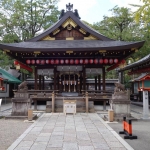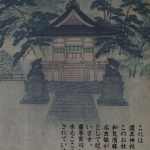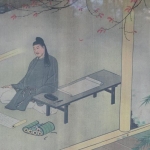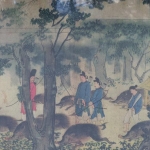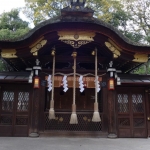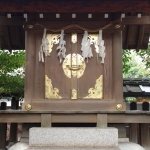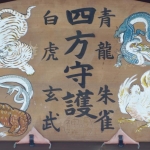Go-o
The shrine enshrines Wake no Kinomaru (733–799), an adviser to the Heian Period Emperor Kammu (737–806), and the courtier’s sister Hiromushi.
To this day the Go’o Shrine, dedicated to all things pig, is visited by individuals who suffer from leg and foot injuries similar to that of Lord Kiyomaro. A stone block bearing footprints is said to heal the injuries.
Instead of the usual komainu (mythical lion-like beasts) that stand guard outside of most Japanese shrines, the Go’o is guarded by a pair of wild boar. Established as a symbol of the new state orthodoxy in 1886 after the Meiji Restoration made loyalty to the Emperor a dominant theme of official propaganda, the shrine displays hundreds of boar images.
Legend has it that after saving the Emperor’s heirs from a plot led by the Buddhist priest Dokyo, Wake no Kinomaru was exiled on the orders of the Empress Koken, who had patronized the “meddling” priest, was possibly Dokyo’s lover and may have been involved in the conspiracy to change the succession in favor of Dokyo.
Traveling in the wilds of present-day Kagoshima Prefecture in Kyushu, the loyal adviser hurt his leg but was protected by a herd of wild boar, hence the iconography that dominates Go’o Shrine.
Little was made of this story until after the Meiji Restoration in 1868 when loyalty to the Emperor became the dominant theme of official propaganda.
The shrine is also thought to help those with leg injuries and is also a venue for lavish marriage ceremonies – conveniently situated as it is to a number of hotels which host the subsequent wedding receptions.
There you can find an example of breccia (pebble stones naturally cemented together) called sazareishi in Japanese, reference to which is made in the Japanese national anthem, the Kimigayo. Breccia (made up of angular stones) or conglomerates (made up of rounded stones) take a long time to form and the reference in the Kimigayo is to moss growing on sazareishi – a metaphor for a long period of time


